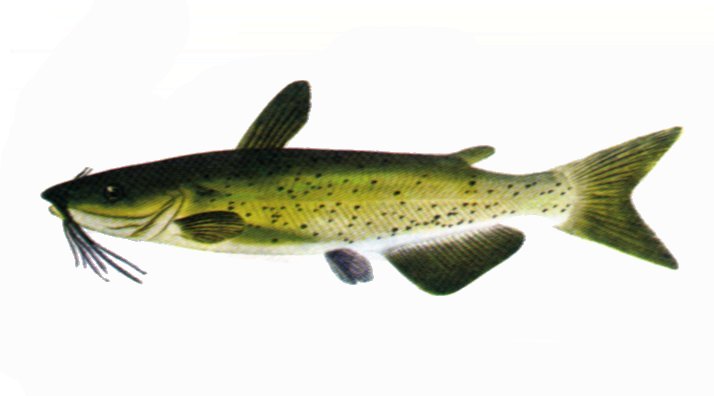
Ictalurus punctatus
Fiddler willow cat
Channel catfish are easily distinguished from all others, except blue catfish, by their deeply forked tail fin. Unlike flathead catfish, the upper jaw projects beyond the lower jaw. Coloration is olive-brown to slate-blue on the back and sides, shading to silvery-white on the belly. Typically, numerous small, black spots are present, but may be obscured in large adults and the anal fin has 24-29 soft rays.
Channel catfish less than 4 inches in length feed primarily on small insects. Adults are largely omnivorous, feeding on insects, mollusks, crustaceans, fish, and even some plant material.
Channel catfish are native to North America east of the Rockies from southern Canada, south into northeastern Mexico, and east of the Appalachians with the exception of much of the coastal plain north of Florida. The species has been widely introduced in other areas as far west as California.
The channel catfish is an adaptable fish, usually found in clear, warm lakes and moderately large to large rivers, over clean sand, gravel or rock-rubble bottoms.
A trophy channel cat can reach a size of over 30 pounds and be more than 2 feet in length.
58 pounds, 0 ounces (Source - IGFA)